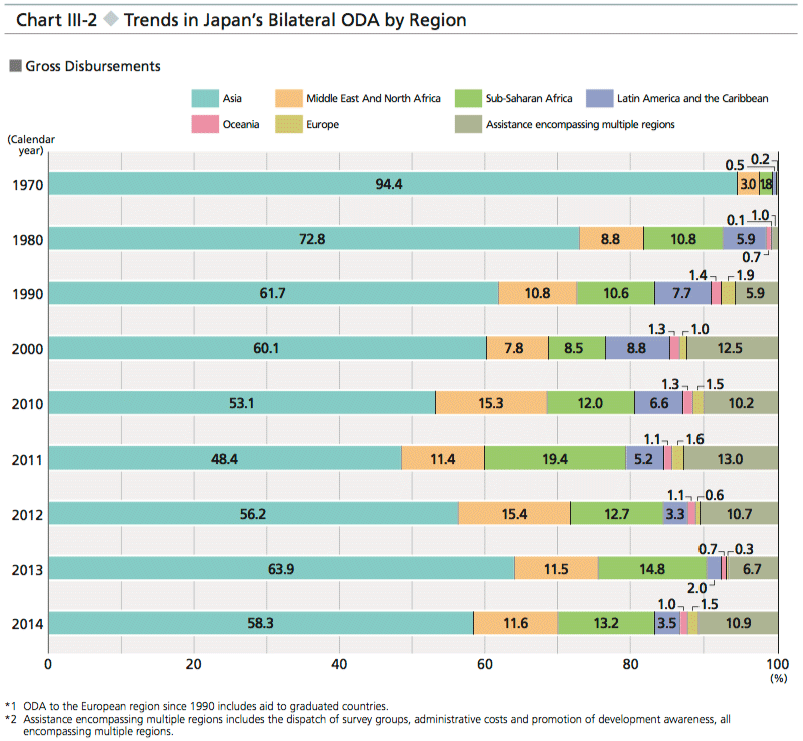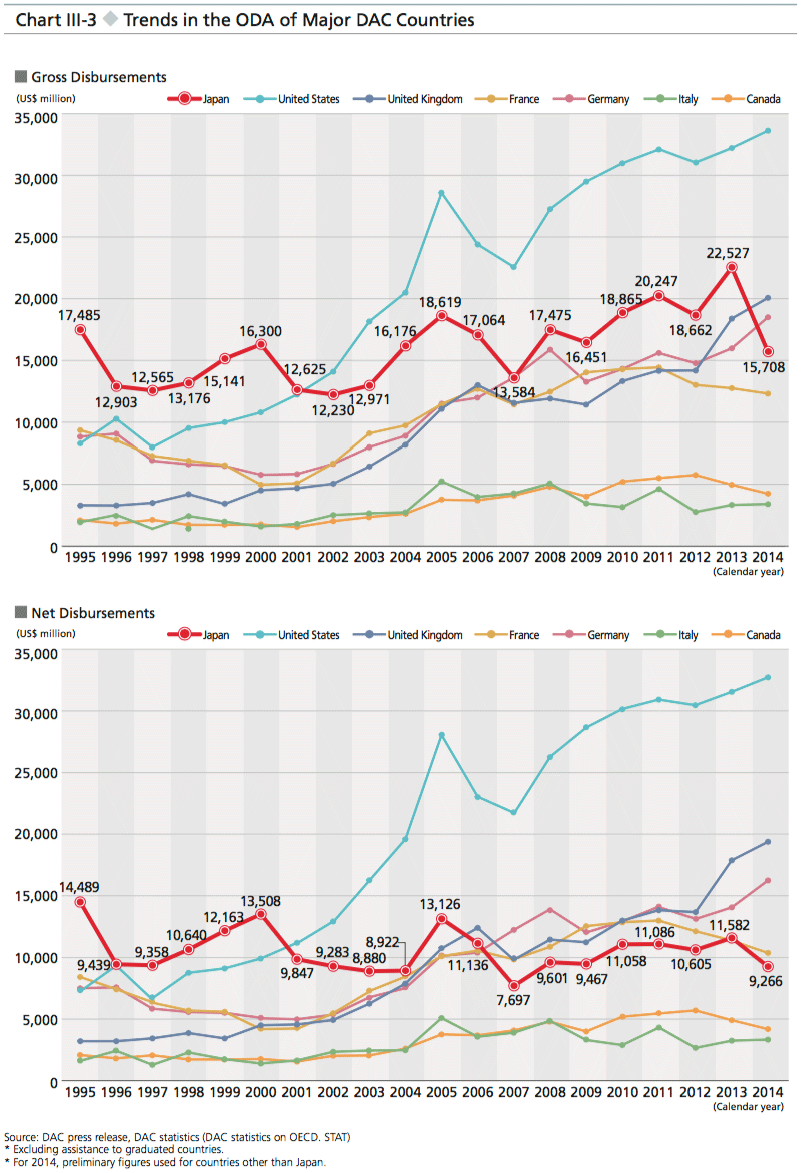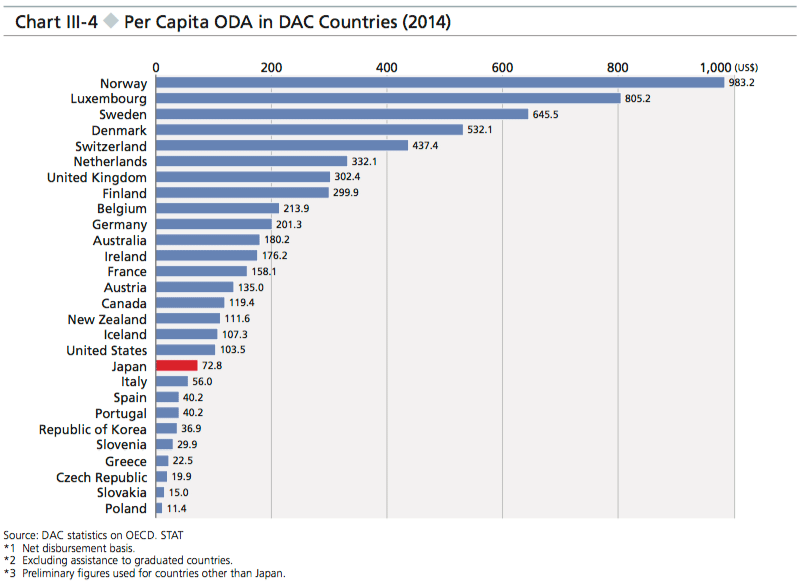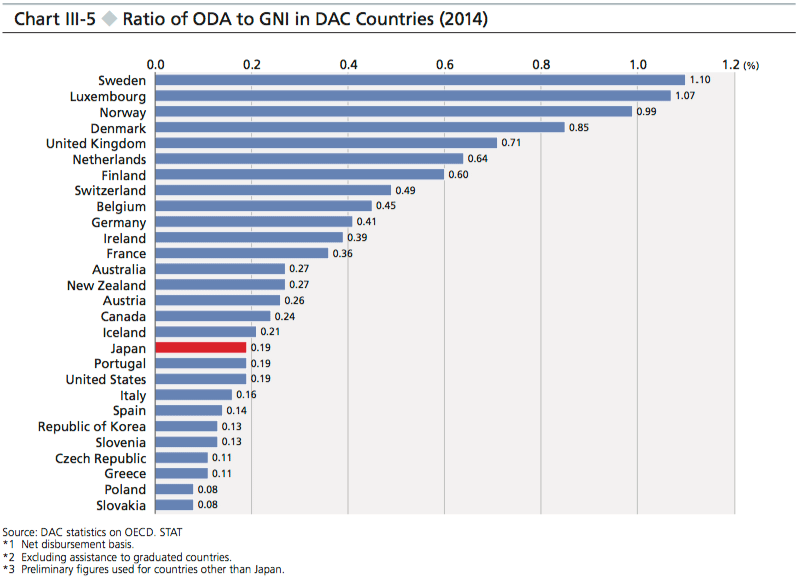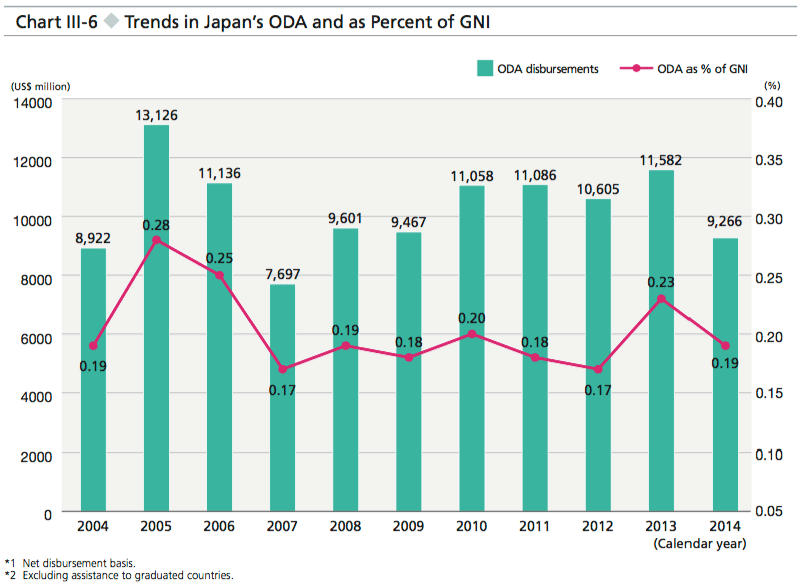Part III Development Cooperation in FY2014
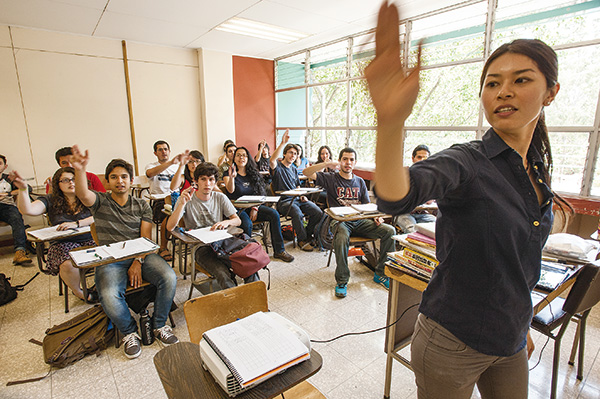
A Japan Overseas Cooperation Volunteer (Japanese language teacher), Ms. Kana Tamamura teaches Japanese at the University of Costa Rica. (Photo: Kenshiro Imamura / JICA)
Chapter 1 Japan’s Official Development Assistance in Terms of Disbursement
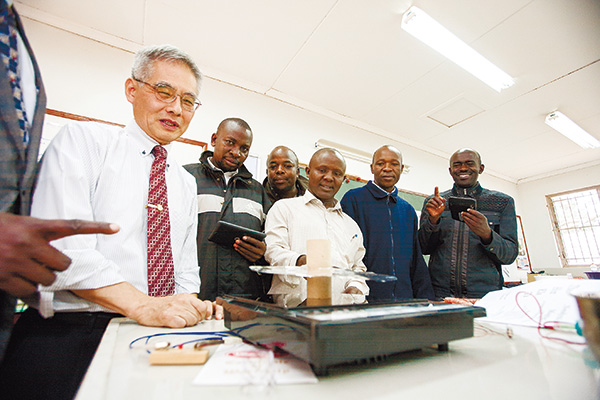
The Centre for Mathematics, Science and Technology Education in Africa (CEMASTEA) in Kenya was expanded with aid from Japan in February, 2014.
Senior Volunteer, Mr. Niimi explains teaching methods to instructors from various African countries at the Science Test Laboratory.
The technical cooperation projects that have been implemented since 1998, specifically the Strengthening of Mathematics and Science in Secondary Education (SMASSE) Project and Strengthening of Mathematics and Science Education in Western, Eastern, Central and Southern Africa (SMASE-WECSA) Project, support the competitiveness of the African region. (Photo: Shinichi Kuno / JICA)
In 2014, Japan’s gross ODA disbursements amounted to approximately $15,707.54 million (¥1,662.6 billion) and were ranked fourth in the world. Japan’s net ODA disbursements, which are gross disbursements minus repayment amounts of loan aid,(Note 1) amounted to approximately $9,266.29 million (¥980.8 billion) and were ranked fifth in the world.(Note 2)
<Disbursement Analysis>
Japan’s 2014 gross disbursements of ODA decreased approximately 30.3% over the previous year (2013). Japan ranked in fourth place among the member countries of the Development Assistance Committee (DAC) of the Organisation for Economic Co-operation and Development (OECD), behind the United States, the United Kingdom, and Germany. In net disbursements, which decreased approximately 20.0%, Japan ranked fifth behind the United States, the United Kingdom, Germany, and France.(Note 3)
Japan’s ODA disbursements decreased over the previous year mainly due to a decrease in the dollar-denominated amount as a result of the yen’s depreciation. In addition, in 2014, there was no debt relief, which had been a special factor that increased ODA disbursements in the previous year.
A breakdown of 2014 disbursements shows that in terms of gross disbursements, bilateral ODA accounted for approximately 79.3% of overall disbursements, while ODA towards international organizations accounted for approximately 20.7%, and in terms of net disbursements, bilateral ODA accounted for approximately 64.9% of overall disbursements, while ODA towards international organizations accounted for approximately 35.1%. Bilateral ODA is expected to strengthen Japan’s relations with recipient countries. Meanwhile, ODA towards international organizations enables us to support international organizations which have expertise and political neutrality in a way that ensures the “visibility of Japanese assistance,” and thereby, also support countries and regions where direct assistance from the Japanese government is difficult to reach. Japan is making every effort to ensure that its aid is provided properly, coordinating both aid types and making flexible use of aid.
Grant aid refers to cooperation that provides grants for purchasing necessary products and services at the request of the recipient government or other entities, for the main purpose of the development of developing regions. Grant aid enables prompt and flexible responses to the needs of developing countries and of the international community after large-scale disasters and other events, and achieves a significant policy effect through which Japan can exercise leadership. Technical cooperation refers to cooperation that makes use of Japan’s know-how, technologies, and experience to train human resources who will become the drivers of socio-economic development in developing countries and regions. This scheme is useful for enhancing developing countries’ technology as well as establishing and improving institutions and organizations. Japan’s ODA Loans provide necessary funds to developing countries and regions with concessional conditions, i.e., low interest rates and long repayment periods, so that they would not put a heavy burden on developing countries and regions. It is easier to provide large-scale assistance through Japan’s ODA Loans than grant aid, making the former more effective for projects such as infrastructure development that are essential for the socio-economic development of developing countries and regions.
Examining by the above aid scheme indicates that disbursements for bilateral ODA calculated as grant aid totaled approximately $2,449.75 million (¥259.3 billion), or approximately 15.6% of the total ODA gross disbursements. Among these grants, grant aid through international organizations accounted for approximately $1,169.03 million (¥123.7 billion), or approximately 7.4% of the total. Additionally, technical cooperation accounted for approximately $2,630.07 million (¥278.4 billion), or approximately 16.7% of the total. Government loan disbursements accounted for approximately $7,373.06 million (¥780.4 billion), or approximately 46.9% of the total gross disbursements of ODA. In terms of net disbursements, which are government loan disbursements from which repayment amounts are subtracted, government loans accounted for approximately $931.81 million (¥98.6 billion). Debt relief was approximately $4,020.86 million (¥392.4 billion) in 2013 but none in 2014.
Japan’s bilateral ODA by region is as follows (in the order of gross disbursement basis, net disbursements [The following disbursements include disbursements to graduated countries]):
◆Asia: $7,271.26 million (¥1,977.13 million)
◆Middle East and North Africa: $1,442.74 million (¥810.26 million)
◆Sub-Saharan Africa: $1,643.27 million (¥1,557.42 million)
◆Latin America and the Caribbean: $434.23 million (¥29.75 million)
◆Oceania: $128.06 million (¥108.91 million)
◆Europe: $192.37 million (¥131.74 million)
◆Assistance covering multiple regions: $1,353.07 million (¥1,353.07 million)
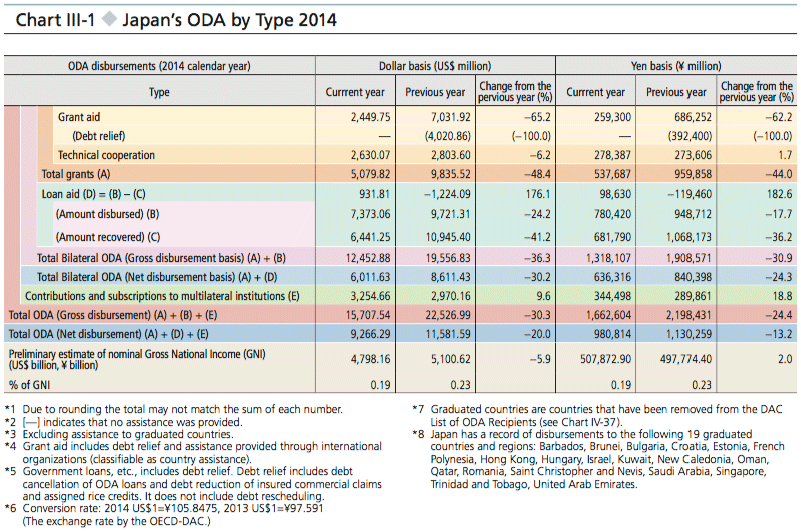
- Note 1: Gross and net disbursements are differentiated as follows:
Net disbursements = gross disbursements–amount recovered (repayment amounts of government loans from recipient countries to donor countries)
Net disbursements are usually used in international comparisons of aid disbursements. - Note 2: Excluding disbursements to graduated countries. For more information regarding disbursements that include graduated countries, see Chart IV-13
- Note 3: Comparison is based on preliminary figures, except for Japan.
